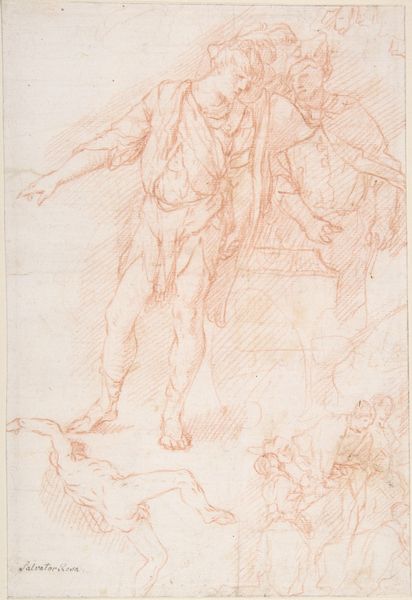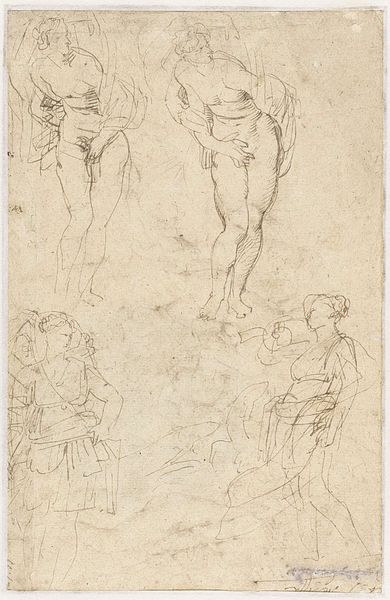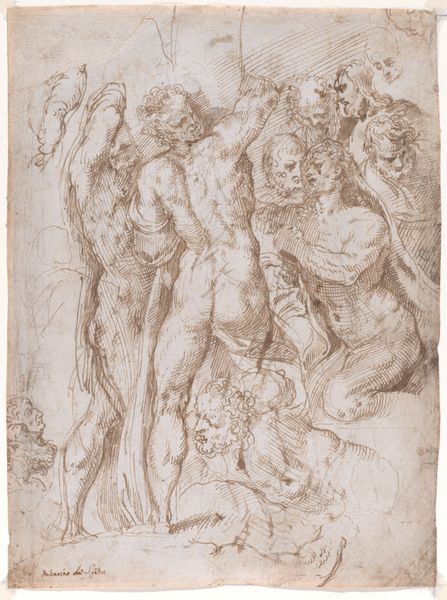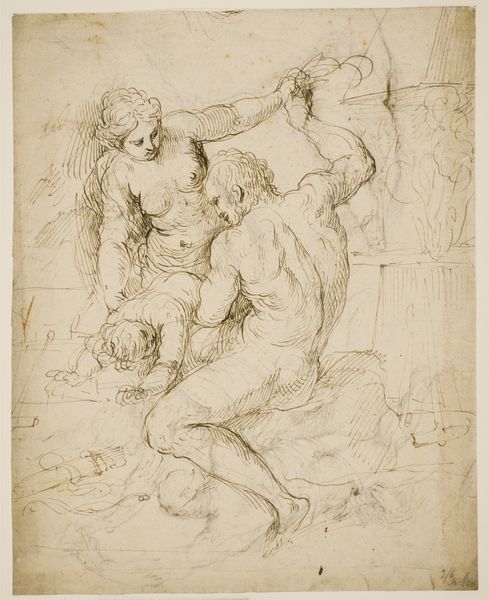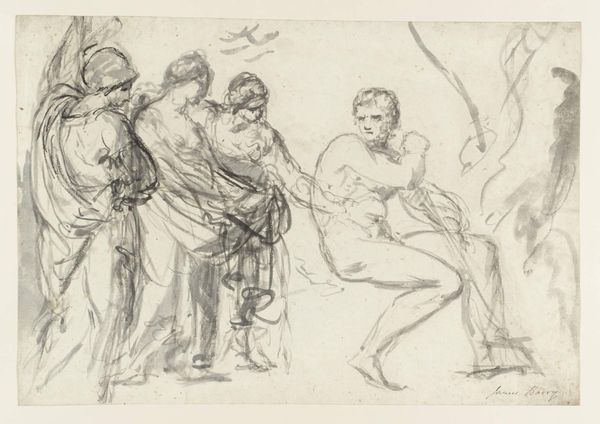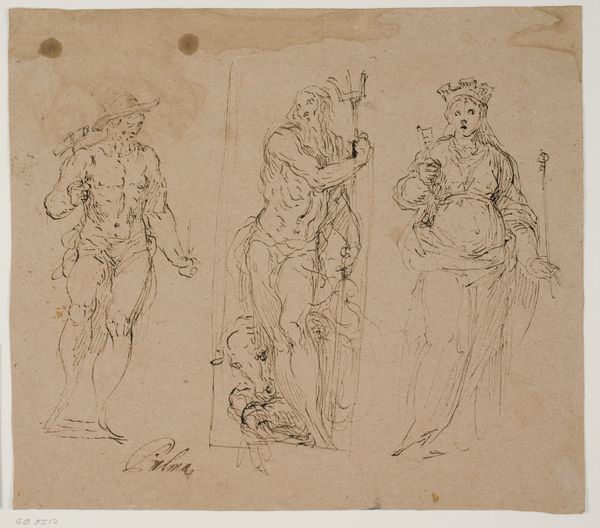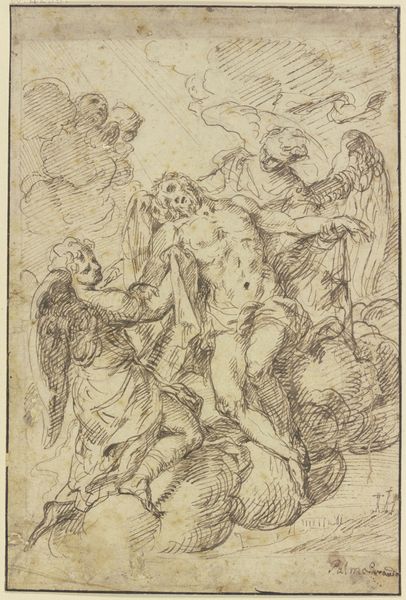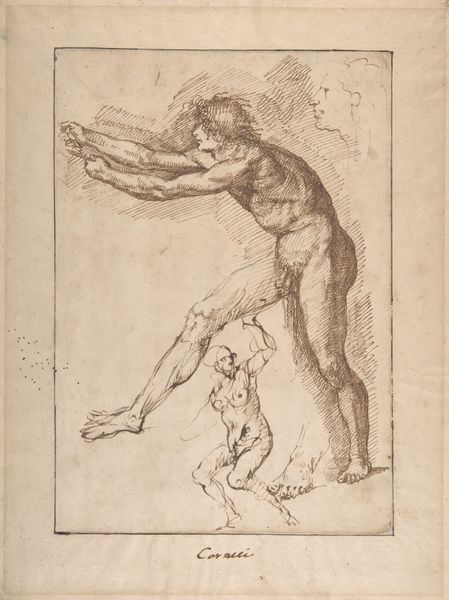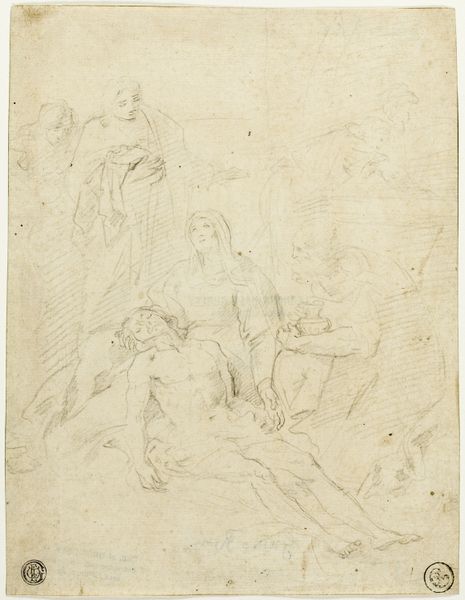
Studies and Sketches for Figures: Standing Male Nude in Frontal View, Male Heads, Seated Monkey, and a Long-Beaked Bird (a Stork?) (recto); Figure Studies: Back View of Standing Male and Female Heads, a Flying Long-Beaked Bird, etc. (verso) 1557 - 1602
0:00
0:00
drawing, print, paper, ink
#
portrait
#
drawing
#
ink drawing
# print
#
bird
#
mannerism
#
figuration
#
paper
#
11_renaissance
#
ink
#
pencil drawing
#
men
#
history-painting
#
nude
#
male-nude
Dimensions: sheet: 10 11/16 x 7 3/4 in. (27.2 x 19.8 cm)
Copyright: Public Domain
Curator: At the Metropolitan Museum of Art, we’re looking at "Studies and Sketches for Figures" by Agostino Carracci, an Italian artist who worked primarily during the late 16th century. Executed in ink on paper, it shows numerous studies, including a standing male nude, a seated monkey, and various human heads. Editor: My first thought is of fragmented stories, potential characters. It feels dynamic, full of raw energy in the figures. The artist seems to be searching, almost like glimpsing half-formed thoughts. Curator: Exactly. Carracci's skill shines in capturing diverse emotions and characteristics through seemingly simple ink lines. This sheet feels less like a finalized work and more like a peek inside the artist's workshop and thinking. Consider how the monkey, often a symbol of base instinct, is positioned beneath the idealized male nude, perhaps as commentary. Editor: That positioning is interesting, layering notions of humanity's animalistic nature against an attempt at ideal beauty. We see it echoing even today when the dominant culture still emphasizes a supposed 'natural' order reinforced by a focus on the nude form in opposition to those whose bodies exist outside that realm of acceptability. Curator: The faces too – some serene, others grotesque. The rapid hatching and varied line weights allow one to perceive the range of human nature as the artist may have understood it. This all exists inside the context of Renaissance Humanism as it's morphing into something more mannerist. Editor: And this sheet reveals an intersection. The figures echo back to classical ideals, but that monkey, those intense studies of ‘grotesque’ faces you mention, feel rebellious and offer a new perspective on those ideals. What about the bird though? Curator: In terms of its iconography, its presence lends an interesting juxtaposition to the terrestrial figures and alludes perhaps to ideas of intellect, freedom, communication between heaven and earth. Editor: Seeing Carracci wrestling with established forms while suggesting new symbols… this isn’t just a sketchbook page; it’s a potent reflection on humanity in transition. Curator: Indeed, a potent and fragmented contemplation. Editor: The energy practically jumps off the page and provokes ideas about who gets to define our image of humankind and how these power dynamics shifted and echo through the centuries.
Comments
No comments
Be the first to comment and join the conversation on the ultimate creative platform.
